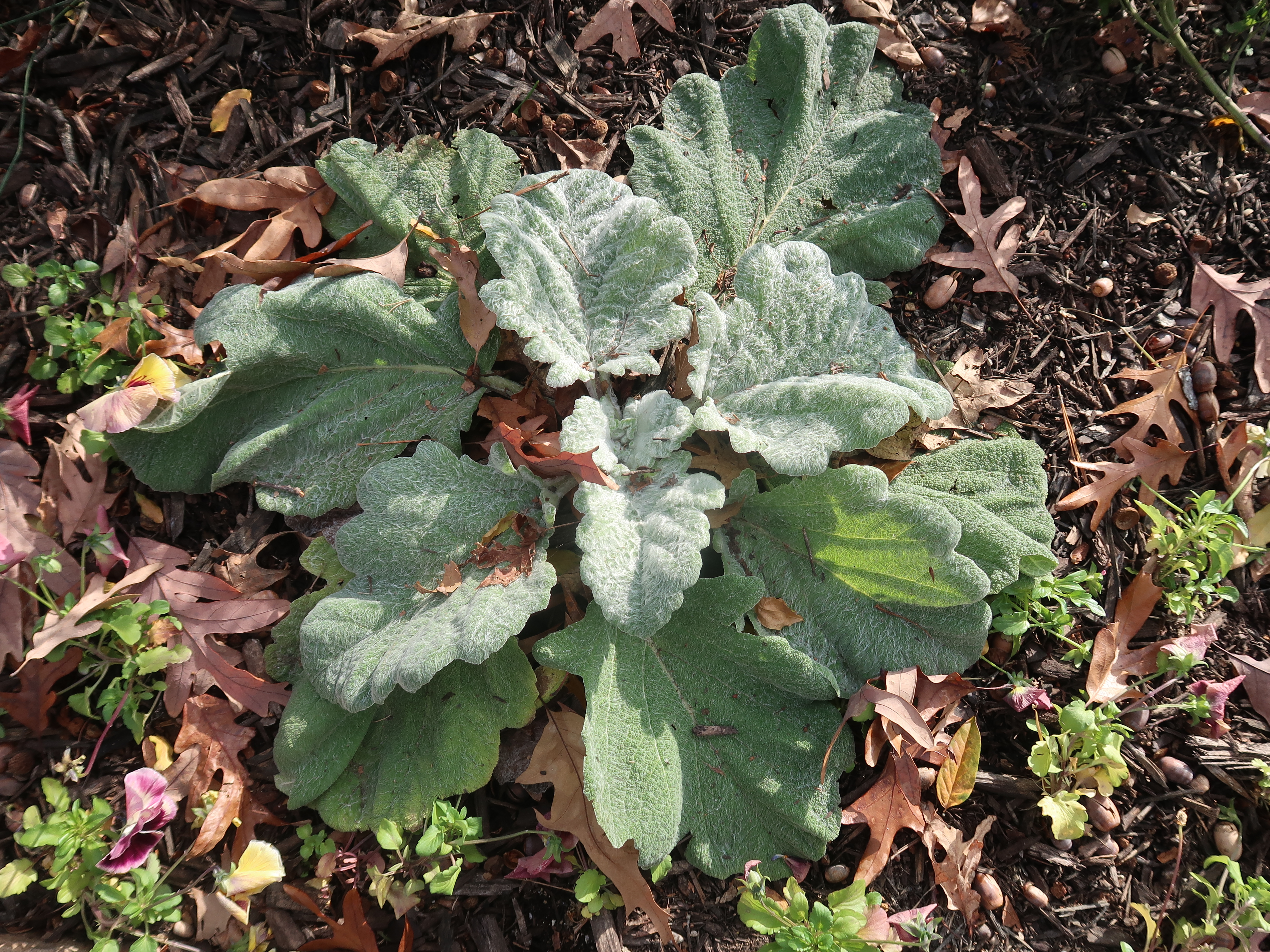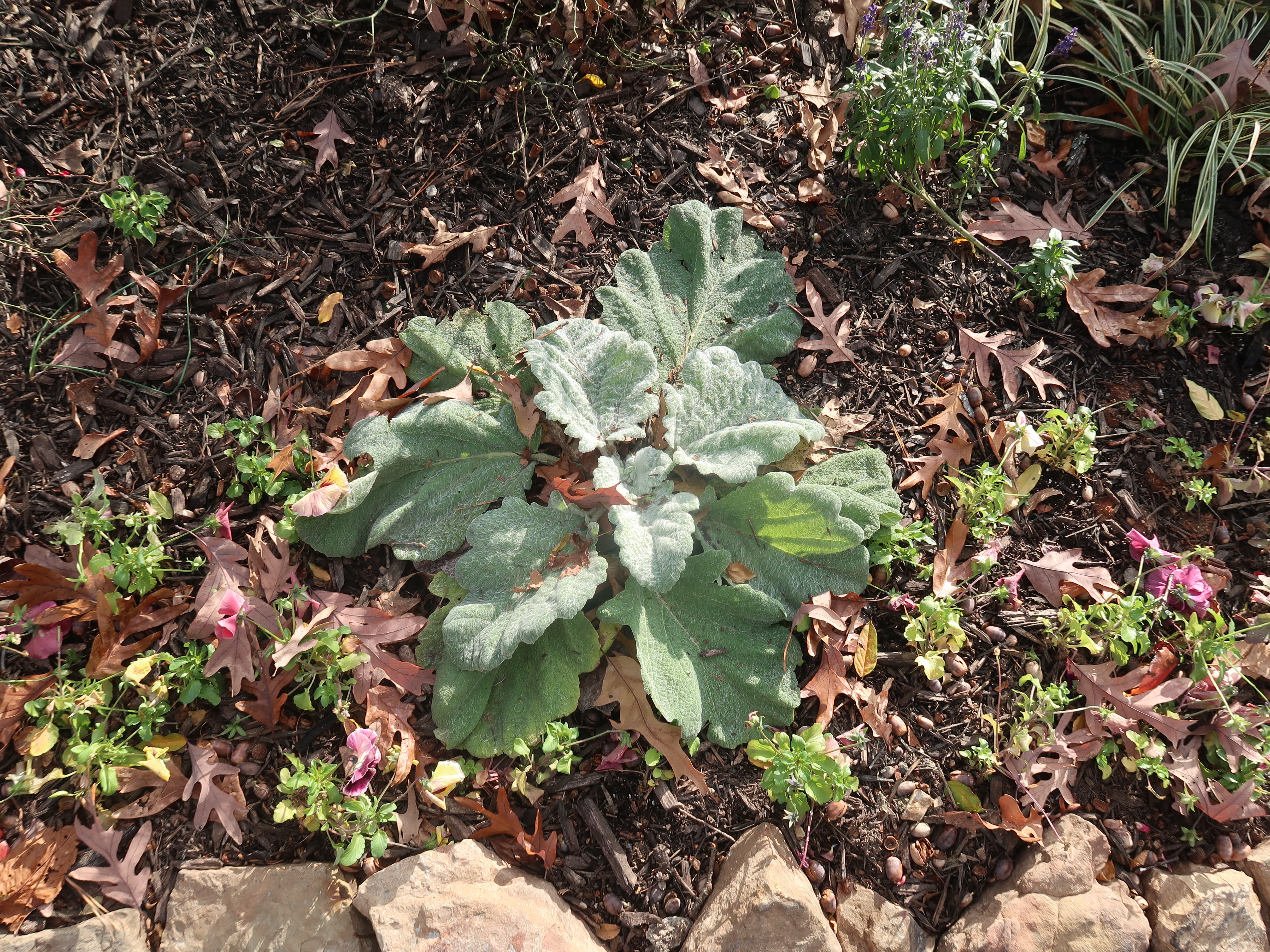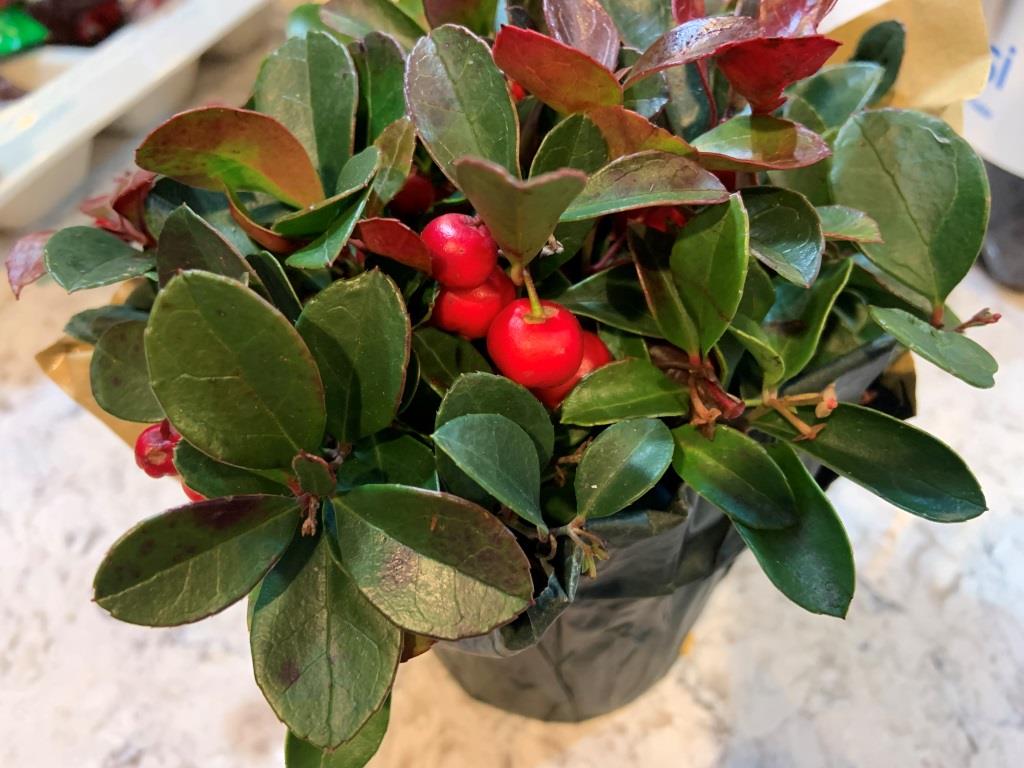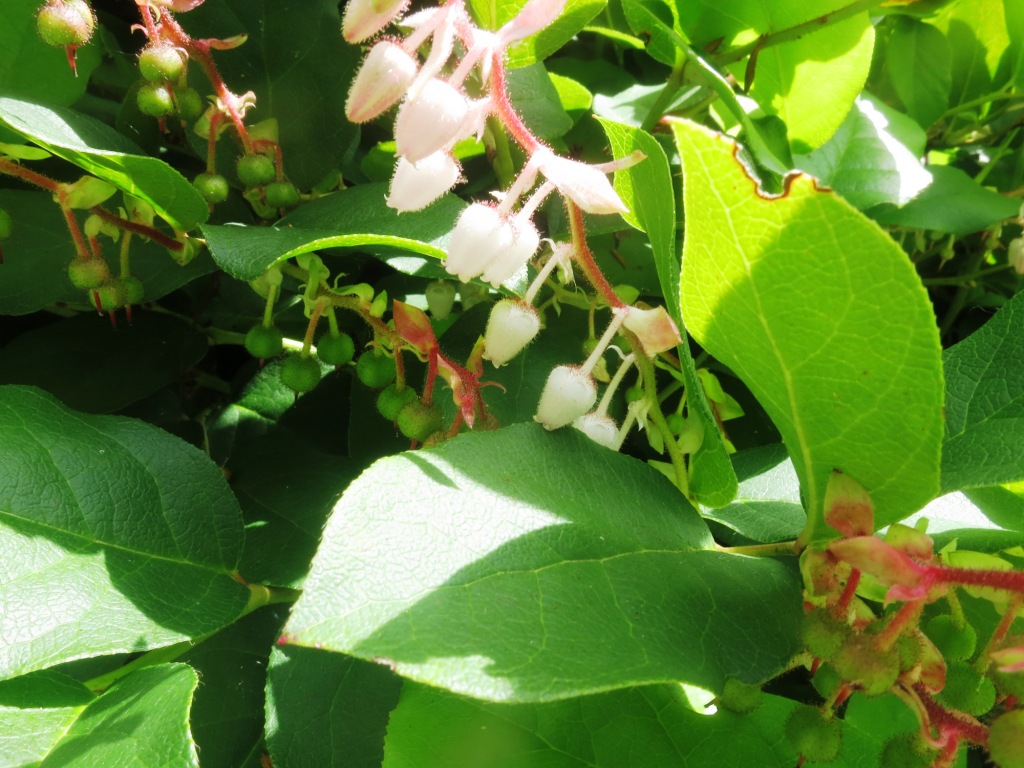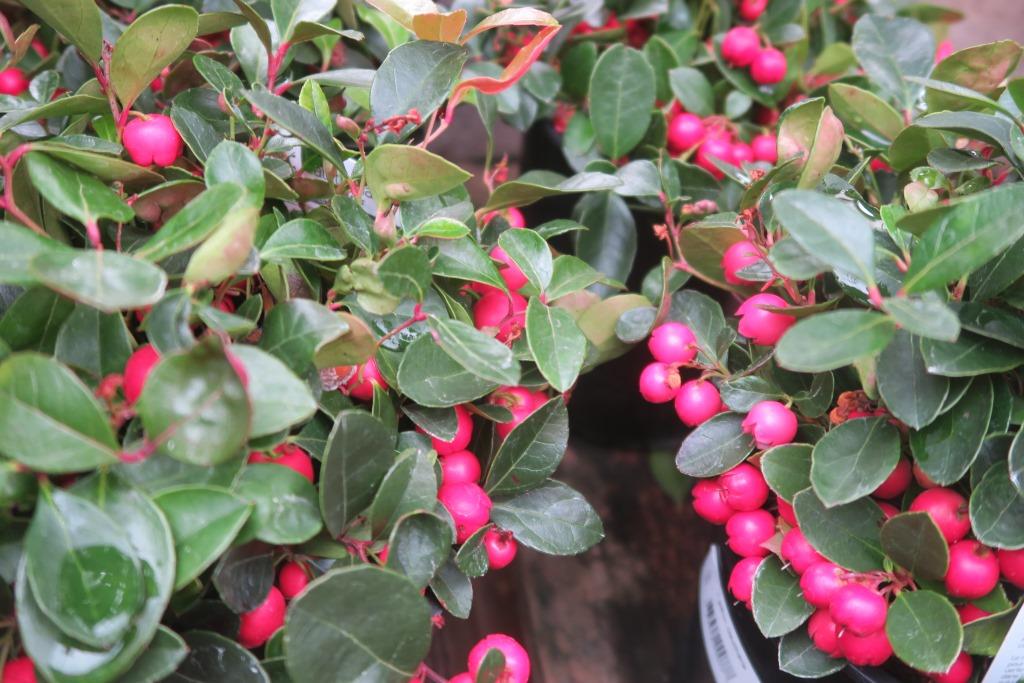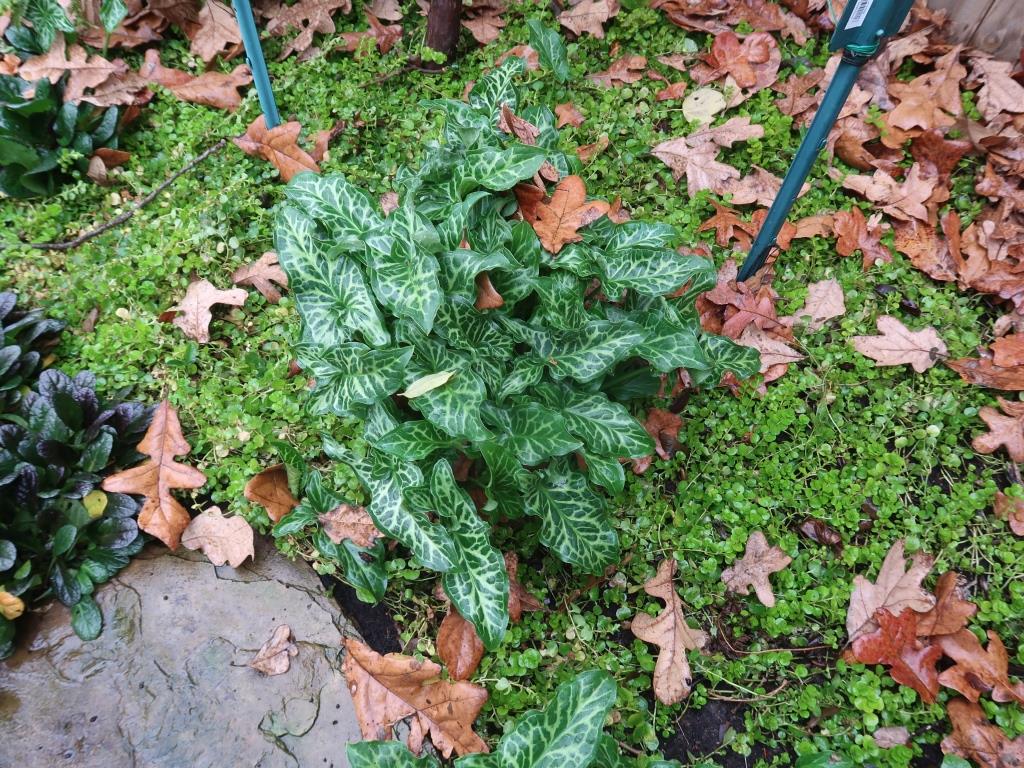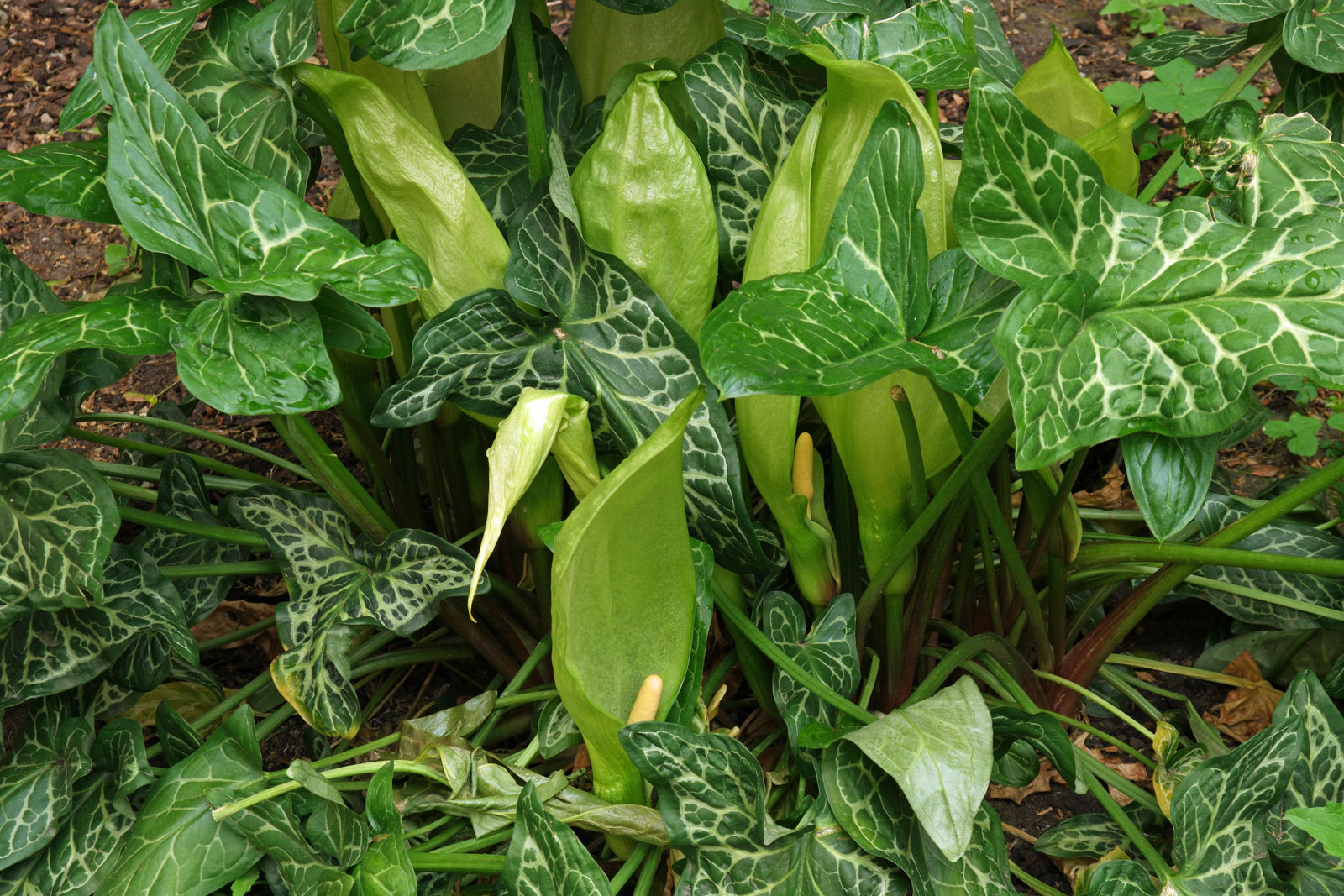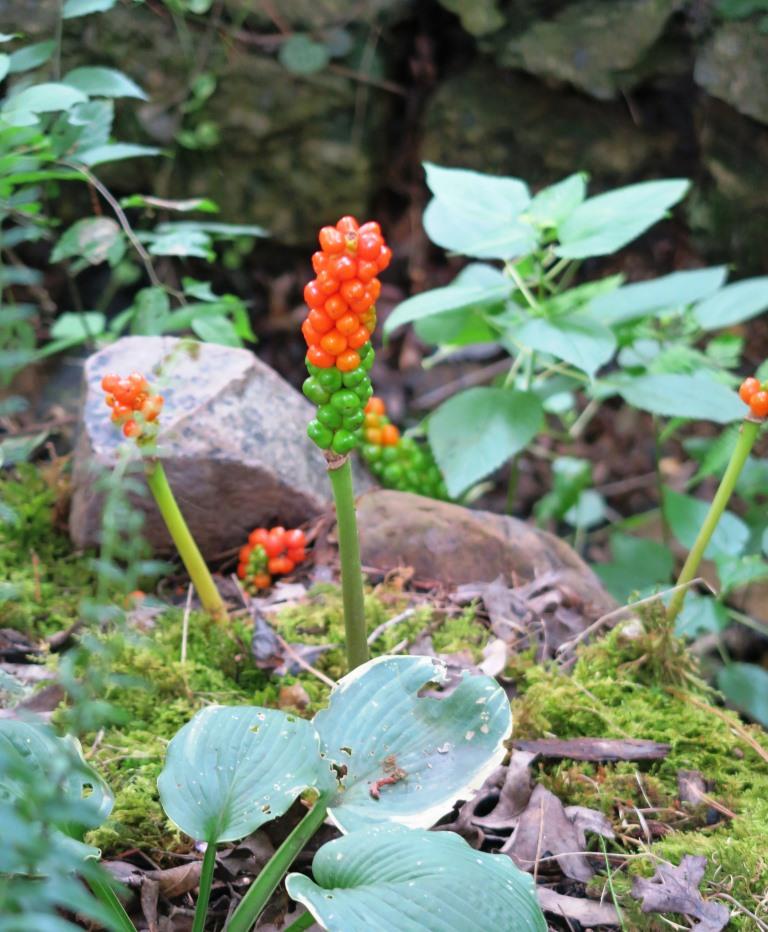Silver sage, Salvia argentea, is one of over 900 species of salvias. Unlike most salvias that are grown for their flowers, silver sage is grown for its large, fuzzy, silver leaves. It looks like a lamb’s ear on steroids. It is native to the Mediterranean, and like most silver foliaged plants, prefers dry sites. It is a biennial or short-lived perennial.
The first year it just has foliage. The second year it can produce a flower stalk, but many recommend cutting off the bloom stalk to lengthen the plants life, since the blooms are not showy. In the southern 1/3 of the state, it can struggle during periods of high heat. In colder winters it will die back. It is recommended not to cut off the damaged foliage to prevent excess winter moisture from getting into the crown and causing the plant to die.
Wintergreen - Gaultheria procumbens
is a slow growing evergreen groundcover for the shade. Native to the eastern US, it prefers rich, well-drained but moist soils. It will grow in light to heavy shade. This member of the heath family has small white bell-shaped blooms in June and July,
followed by showy red berries in the fall and winter.
The top leaves take on a purplish-red color with cold weather. Supposedly leaves and fruits are edible—but I have never eaten them. I found these plants as a holiday gift plant at Trader Joe’s! Since they have been inside, I would enjoy them indoors for the winter, and then plant outside in the spring.
Arum italicum or Italian arum
is a cool season shade perennial. The foliage appears in late fall, grows all winter and in late winter/early spring produces a whitish green spathe bloom.
A seed spike will follow with green berries. With warmer weather, the foliage disappears leaving behind a leafless spike of orange to red berries.
We get a lot of questions about “what is this” when gardeners come across the berry spikes. It resembles our native Jack-in-the-pulpit but his plant is native to Europe. This plant generated a lot of responses this week. Some gardeners hate it and find it invasive. I have always enjoyed it, but I only have one clump and I have never seen it spread. It is listed as invasive in Washington and Oregon with a few green dots in other places. All members of the aroid family contain calcium oxalate crystals which can cause blistering and are considered potentially toxic.
